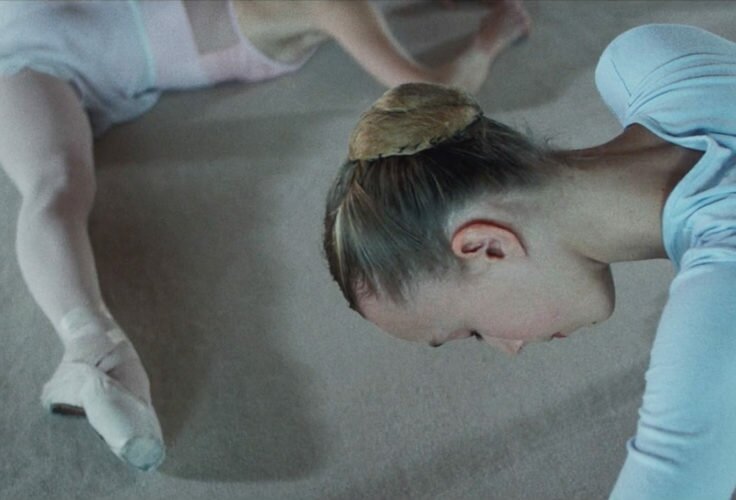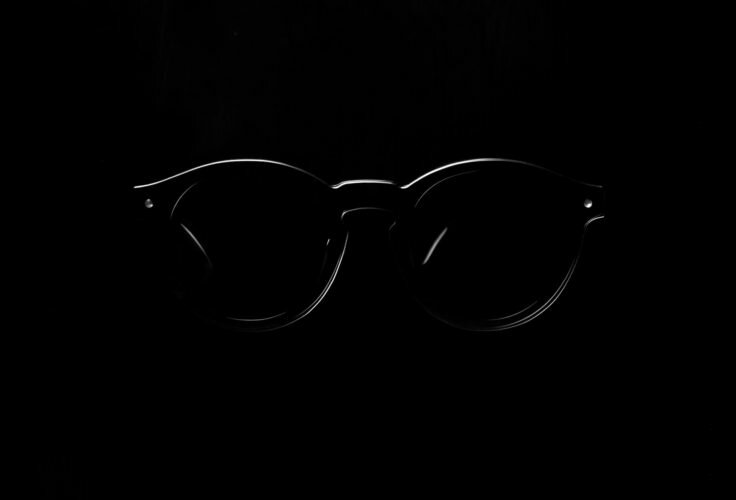Necesitamos vacaciones. Como las de este GIF vintage. Joan Pons justifica su embotamiento mental a cuenta de estas imágenes.
THREE
PLAYED
BY
ARCHI-
TECTURE
IN
THREE
RECENT
FILMS
By Rafael
Gómez-
Moriana
Buildings are as ubiquitous in films as they are in our lives. Even in the most arcane science fiction films, there is always a built structure of some kind sheltering intelligent beings of some sort or another. Yet buildings tend to play a background role in film, just as they do in real life. Architecture is normally the “setting”, establishing the mood and the context. Rare is the film in which architecture itself plays a leading role.
Even REM, a documentary about the most influential living architect of our time, places the architecture of Rem Koolhaas and his Office for Metropolitan Architecture (OMA) behind its protagonist. REM is clearly a film about an architect, not architecture (which is curious, considering that the slogan coined by Koolhaas for the 2014 Venice Biennale which he directed was that it would be “about architecture, not architects”). Filmed by Tomas Koolhaas (Rem’s son), the documentary follows the busy international flight schedule of globalization’s favorite architect. In fact, the camera literally follows Koolhaas from behind a great deal of the time, showing us his back while he’s overlooking Beijing from the rooftop helicopter landing pad of the China Central Television (CCTV) building or supervising a construction site in Doha from the crest of an encroaching desert sand dune. OMA’s architecture forms part of the action only in exceptional moments, such as a dramatic opening sequence in which the camera follows a dancer interacting with the fluid spaces of the Casa da Música in Porto. Here, the architecture literally shapes the dance-action at the same time that it provides its setting.
Rem Koolhaas first gained notoriety in the late 1970s for a book about Manhattan’s skyscrapers titled Delirious New York, which he wrote after a stint as a newspaper journalist and a scriptwriter of two films (one of which, titled “Hollywood Tower”, was written for the softcore porn impresario Russ Meyer). Subtitled “A Retroactive Manifesto for Manhattan”, Delirious New York expounds a provocative theory: by virtue of a new-found independence gained by a simple floor-plate when stacked vertically in high numbers and accessed by elevator, the invention of the skyscraper enabled the most surreal juxtaposition of highly diverse lifestyles and programmatic activities to take place in one single building, thereby provoking a highly metropolitan ‘culture of congestion’, as Koolhaas terms it.






The recent adaptation of the 1975 J. G. Ballard novel High-Rise into a film of the same name by Ben Wheatley perfectly illustrates this theory, although in a different light. High-Rise tells the story of how social life inside a tower block breaks down and degenerates into feuding between different social classes occupying different strata of the building: while the wealthy live the high-life in the top-most floors of the building, the less well-off are relegated to lower floors; not unlike that famous 19th century French cartoon (reproduced on the cover of Georges Perec’s book Life: A User’s Manual) illustrating vertical class division in a typical Parisian tenement, except that back then –before the invention of the elevator– it was the poor who were condemned to living high up in leaky attics. High-Rise’s inhabitants, who withdraw increasingly from the outside world as a result of the elevator being out of order, begin to develop unusual and eccentric lifestyles of their own as the building degenerates gradually into disrepair. While the architect who built the tower, Anthony Royal, lives in a surreal luxury penthouse with a roof garden upon which a horse grazes, decadent orgies take place on the floors immediately below, and vandalism and violence reign on the lowest floors.
The dystopian degradation of an architecture designed with good intentions is a theme that also comes up in , which is set in a typical British Modernist housing estate of the post-war era. Modernist mass-housing is highly stigmatized and often associated with ghettoes in the popular psyche. Architecture critic Charles Jencks points to the demolition of the initially prize-winning but later degraded Pruitt Igoe Modernist housing projects in Saint Louis, Missouri (by Japanese-American architect Minoru Yamasaki, who also designed the World Trade Centre in New York) by the authorities less than two decades after completion, in 1972, as the precise moment when modernism ends and the more populist “post-modern” movement in architecture begins.
Modernist housing also features prominently in a recent film by Tobias Nölle titled Aloys, a story about a lonely and reclusive private investigator who lives and works secluded within a large 1950s housing estate in Switzerland, and who is one day awakened from his dull life by a mysterious and imaginative woman living next-door. Here though, the concrete tower blocks containing hundreds of standardized apartments do not represent social problems or inequality, as they usually do, but, quite the contrary, bourgeois conformity. The mysterious woman next door, who shelters all sorts of flora and fauna in her otherwise empty apartment and who dreams of other worlds, is a free spirit in a neighborhood in which everything is orderly, clean and uneventful; modernist housing just as envisioned by Swiss architect Le Corbusier and converted into planning dogma by the Congrès Internationeaux d’Architecture Moderne (CIAM), whose towers-in-the-park housing model ended up being cloned all over the world. Aloys portrays the egalitarian social utopia of modernism precisely as it was intended, not the anti-social dystopia it is perceived by many to have degraded into.
REM, High-Rise, and Aloys each portray architecture in a different way: as the artistic creation of a genius, as a dystopia of social breakdown, and as an agent of social conformity. Architecture is treated as diversely in film as it is ubiquitous.






















